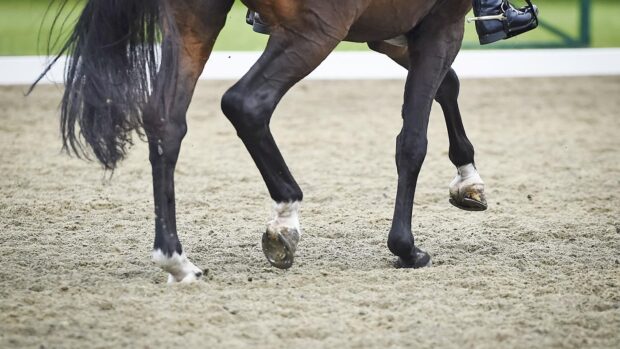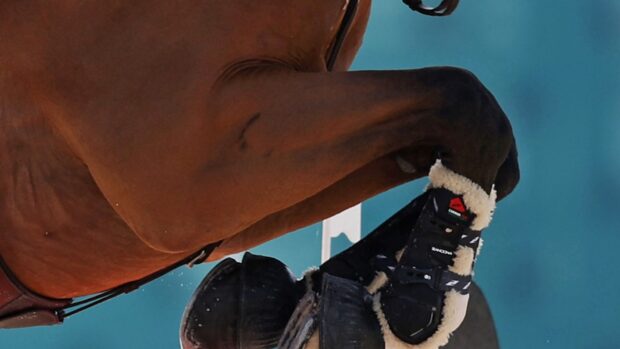GIVING course-designers power to pull horses up on the cross-country has been under discussion, as has the return of a second collective mark in pure dressage.
The possibility of having to “qualify” for the cross-country in short-format eventing was another proposed rule change on the table on the second day of the 2022 FEI sports forum (26 April).
FEI eventing committee chairman David O’Connor said the proposal to eliminate combinations with 20 or more showjumping faults, in competitions where the cross-country comes last, came from the FEI’s national safety officer programme, as this is a national rule in some countries.
“We picked 20 as you can make a mistake; in a treble, you can have three rails down for one mistake, but add two more and you’re clearly not able to handle that level, and that’s why we wouldn’t want to see you go to the next phase,” he said.
Another FEI proposal is to give course-designers additional responsibilities on cross-country day.
“It’s their day,” Mr O’Connor said. “And they’re often the most educated person about, on how horses jump.”
This would allow course-designers to, in communication with the ground jury, stop horses and impose penalties for dangerous riding.
“We’ve had no backlash from course-designers on this, they’re very happy to do it,” he said. “To have their expertise I think is hugely important.”
One proposal from national federations was for rotation of course-designers, at all events, so the designer could only be in place for six years, with the main aim being to promote course-designers and improve the procedure of producing them.
“We have exceptional course-designers who have done jobs all over the world, but they’re all almost the same age and looking to retire,” Mr O’Connor said. “There’s a gap between these guys and the next group because these guys are so good, they did most of the jobs. We feel this is the next step to help produce future designers.”
A representative of the Polish federation said it is difficult to find designers in Poland, and asked if it would be possible just to change for one year, but Mr O’Connor said “that’s not the direction we were looking to go in”, and the aim would be to look at addressing issues such as this.
Burghley director Martyn Johnson said it was a good concept but “I think we need to be careful that at the top level, we’re making sure the right people come through” and that a six-year term is “a bit tight”.
Another federation proposal was to reduce the penalties for activating a frangible pin or missing a flag from 11 to four and 15 to seven respectively.
Eventer Andrew Hoy said he feels the penalties should stay as they are.
“With the penalties we have, this only helps increase the quality of riding. If penalties become less I think there will be more risks taken,” he said, adding that on a social licence front, “we must always be trying to improve the quality of riding, and the way horses run and jump”.
FEI proposals for dressage rules include a more progressive event structure and a review of the definition of and requirements for amateurs. There was support for creating an amateur tour as this would help the growth of the sport, and one proposal was for riders to have amateur licences or certificates issued by their national federations.
“Amateurs are a really important part of our sport,” said Swedish Olympian Patrik Kittel, adding that numbers of elite riders are limited, and an amateur tour would help encourage more people to participate. “The difficult thing is to clarify what’s an amateur and what’s a professional.”
It was agreed that more discussion was needed on what constitutes amateurs and professionals.
One of the national federations’ proposals was to reintroduce a second collective mark. Since 2018, only the rider collective has been in place but several federations and stakeholders put forward the idea to reinstate it.
Dressage committee chair Maribel Alonso said: “Consensus wasn’t reached in the dressage committee so we wanted to hear what you had to say. It needs evidence-based arguments and we need to review what’s already been presented and accepted at the general assembly.”
She added that it is “absolutely legitimate” to question decisions but the removal of the second collective was based “on transparency, immediacy and fairness”.
“The message has to be clear. If we’re going to change, the change has to mean something and bring in consistency,” she said. “We need permanent education and revision to make sure we’re bringing back more to the sport.”
Patrik said this is a “very tricky topic”, on which everyone he asks has different opinions.
“I know the riders’ club was firm on wanting two marks back,” he said. “For myself I think it’s more important we review this again, that we’re all working on it together and we don’t rush into this, that whatever we do now will work, hopefully be the final one and bring the sport forward.”
It was agreed that more review and science-based evidence was needed before any decisions.
All proposals will be subject to more discussion before a first draft of rule changes is sent to national federations and stakeholders this summer. Feedback will be taken on board, then the final drafts will be voted on at the FEI general assembly in November.
You might also be interested in:

Agreement means grooms’ voices will be heard at the top of the sport

New para test names could be on the cards in rules overhaul

Subscribe to Horse & Hound magazine today – and enjoy unlimited website access all year round
Horse & Hound magazine, out every Thursday, is packed with all the latest news and reports, as well as interviews, specials, nostalgia, vet and training advice. Find how you can enjoy the magazine delivered to your door every week, plus options to upgrade your subscription to access our online service that brings you breaking news and reports as well as other benefits.




